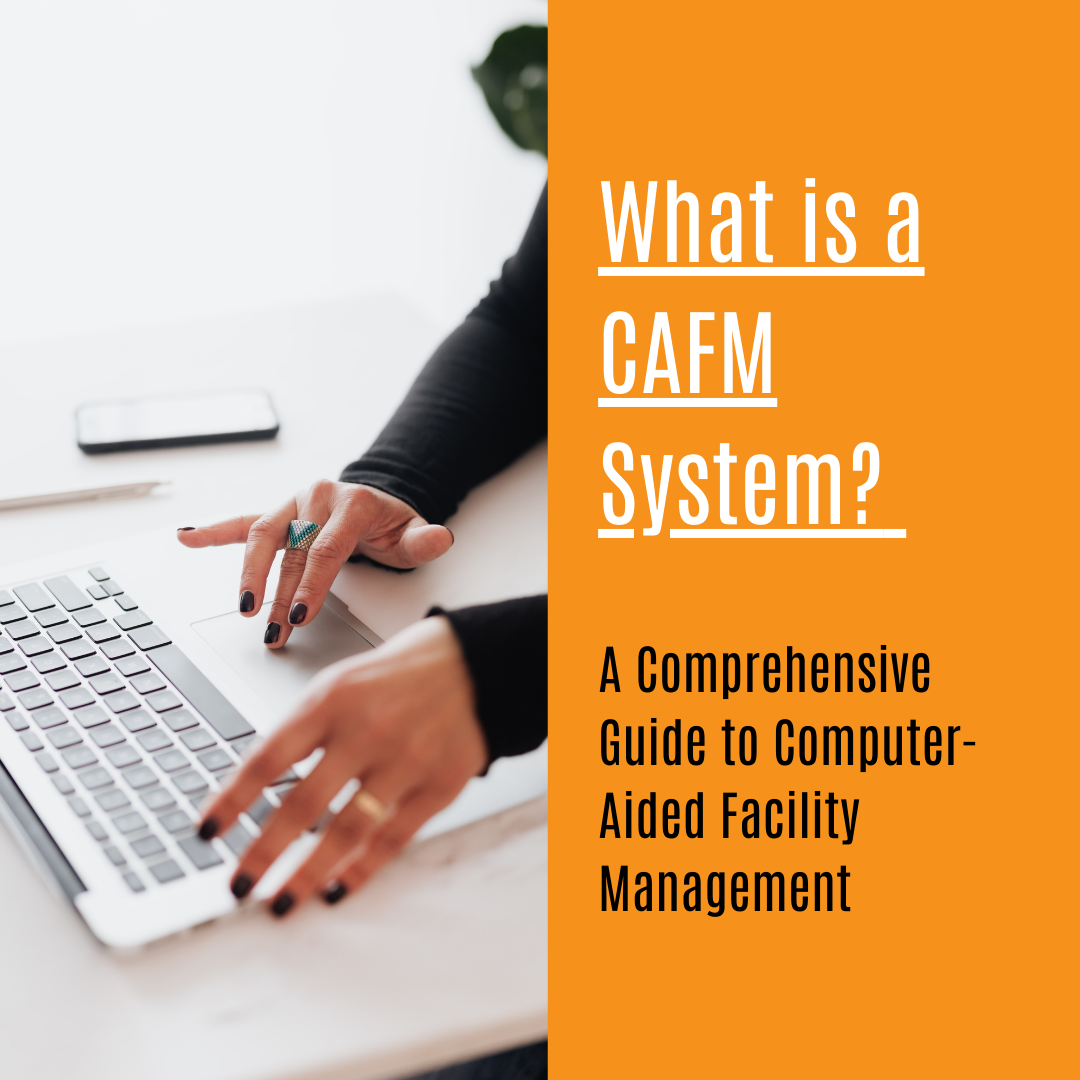
What is a CAFM System? A Comprehensive Guide to Computer-Aided Facility Management
In today’s fast-paced world, managing facilities efficiently is no easy task. Facility managers face a myriad of challenges, from maintaining assets and ensuring compliance to optimising assets and managing work orders. Fortunately, technology comes to the rescue with a superhero solution: CAFM (Computer-Aided Facility Management) system. In this comprehensive guide, we’ll unravel the mysteries of CAFM, exploring what it is, what it does, and the multitude of benefits it brings to the table. So, fasten your seatbelts, and let’s embark on an enlightening journey into the world of CAFM!
Chapter 1: Understanding CAFM – Definition and Purpose
What is a CAFM System?
A CAFM system is a software platform that leverages technology to streamline and enhance facility management processes. It acts as a centralised hub, integrating various functions and data related to facility operations, maintenance, and resources. With a CAFM system in place, facility managers can efficiently manage assets, sites, contractors, work orders, preventive maintenance, and more.
The Purpose of CAFM
The primary purpose of a CAFM system is to improve the efficiency and effectiveness of facility management. By automating manual tasks, providing real-time data insights, and fostering collaboration, CAFM empowers facility managers to make informed decisions, optimise resources, and deliver superior facility services.
Chapter 2: Key Features and Functionality of CAFM Systems
Asset Management
One of the core functionalities of a CAFM system is asset management. Facility managers can track, monitor, and maintain assets such as equipment, machinery, furniture, and fixtures. The system provides comprehensive asset data, including maintenance history, warranties, and current condition, enabling proactive maintenance planning and optimised asset utilisation.
Work Order Management
Gone are the days of manual work order management. CAFM systems automate work order processes, from creation to assignment and completion. This streamlines task management, improves response times, and enhances collaboration among facility teams and contractors.
Preventive Maintenance
Proactive maintenance is key to minimising downtime and extending the lifespan of assets. CAFM systems enable facility managers to schedule and manage preventive maintenance tasks based on predefined intervals, ensuring that critical assets receive timely attention and care.
Reporting and Analytics
Data-driven decision-making is essential for efficient facility management. CAFM systems offer robust reporting and analytics tools, enabling facility managers to generate insightful reports, track key performance indicators (KPIs) against contractors, internal engineers and helpdesk user to identify trends and improve operations.
Chapter 3: The Benefits of Implementing a CAFM System
Enhanced Efficiency and Productivity
By automating manual tasks such as qualifying issues, instructing and reminding contractors, updating all stakeholders, chasing reports etc. CAFM systems save valuable time and reduce administrative burden for facility managers and their teams. This leads to enhanced productivity, allowing facility managers to focus on strategic initiatives such as analysing data to identify shortfalls improving service delivery.
Cost Optimisation
Optimising resources and implementing preventive maintenance strategies result in significant cost savings for facilities. CAFM systems help identify areas for cost reduction, cut down on costly repairs, and minimise wastage of resources.
Data-Driven Decision-Making
With access to real-time data and actionable insights, facility managers can make informed decisions to drive continuous improvement and operational excellence.
Improved Compliance and Risk Management
CAFM systems help ensure compliance with regulatory standards and industry best practices, reducing the risk of penalties and operational disruptions. Automate schedules for compliance tasks, set up routine inspections, view what’s upcoming and what’s overdue in real time plus much more.
Seamless Collaboration
Facility management involves multiple stakeholders, including internal teams and external contractors. CAFM systems foster seamless collaboration, enabling efficient task assignment, communication, and service delivery.
Chapter 4: How CAFM Systems Improve Facility Management Processes
Streamlined Asset Tracking
Real-time visibility into asset conditions and maintenance history enables facility managers to efficiently track and manage assets, ensuring optimal performance and minimising downtime.
Proactive Maintenance Planning
Automated preventive maintenance scheduling allows facility managers to stay ahead of maintenance needs, reducing emergency repairs and costly breakdowns.
Enhanced Work Order Management
Automated work order processes improve task assignment, reduce response times, and ensure smooth collaboration among facility teams.
Improved Reporting and Analytics
CAFM systems provide facility managers with comprehensive reporting and analytics capabilities, enabling data-driven decision-making and continuous improvement.
Chapter 5: Don’t Have Time Or The Budget?
Overcoming Budgetary Stigma: Embracing the Cost-Effectiveness of CAFM Systems
One of the common stigmas associated with CAFM systems is the perception of high costs. Many facility managers are hesitant to invest in new technology due to concerns about budget constraints and the fear of not achieving a sufficient return on investment (ROI). However, it’s essential to look beyond the initial upfront costs and consider the long-term benefits and cost-effectiveness of CAFM systems. While it’s true that implementing a CAFM system requires an initial investment, the savings and efficiencies gained over time can far outweigh the costs if used correctly.
A well-implemented CAFM system can lead to substantial cost savings by streamlining operations, optimising resource allocation, reducing downtime, and minimising maintenance and repair expenses. With automated processes and data-driven decision-making, facility managers can identify areas of inefficiency and implement cost-saving measures. Moreover, CAFM systems help prevent costly breakdowns through proactive maintenance, extend the lifespan of assets, and reduce the need for emergency repairs. When approached strategically, a CAFM system becomes a cost-effective solution that drives operational excellence and supports facility managers in meeting their budgetary goals.
Navigating the Implementation Timeline: Accelerating CAFM Adoption with Efficient Planning
Another common misconception surrounding CAFM systems is the belief that the implementation process is time-consuming and disruptive. Facility managers may worry about a lengthy transition period and potential delays in realising the benefits of the system. While it’s true that implementing a CAFM system requires careful planning and coordination, modern solutions offer streamlined implementation processes to minimize downtime and accelerate adoption.
The key to expediting CAFM implementation lies in efficient planning and collaboration with experienced software providers. Facility managers should engage in thorough research to identify a CAFM solution that aligns with their specific needs and integrates seamlessly with their existing workflows. Proper training and onboarding for staff members will ensure a smooth transition and quicker adoption of the new system. Additionally, working closely with the CAFM vendor during the implementation phase will help address any challenges and customise the system to suit the facility’s unique requirements. By approaching the implementation process strategically, facility managers can embrace the transformative power of CAFM systems without being held back by concerns about time constraints.
Author
Charlie Bown
Ex Facility Manager, I feel your pain!

